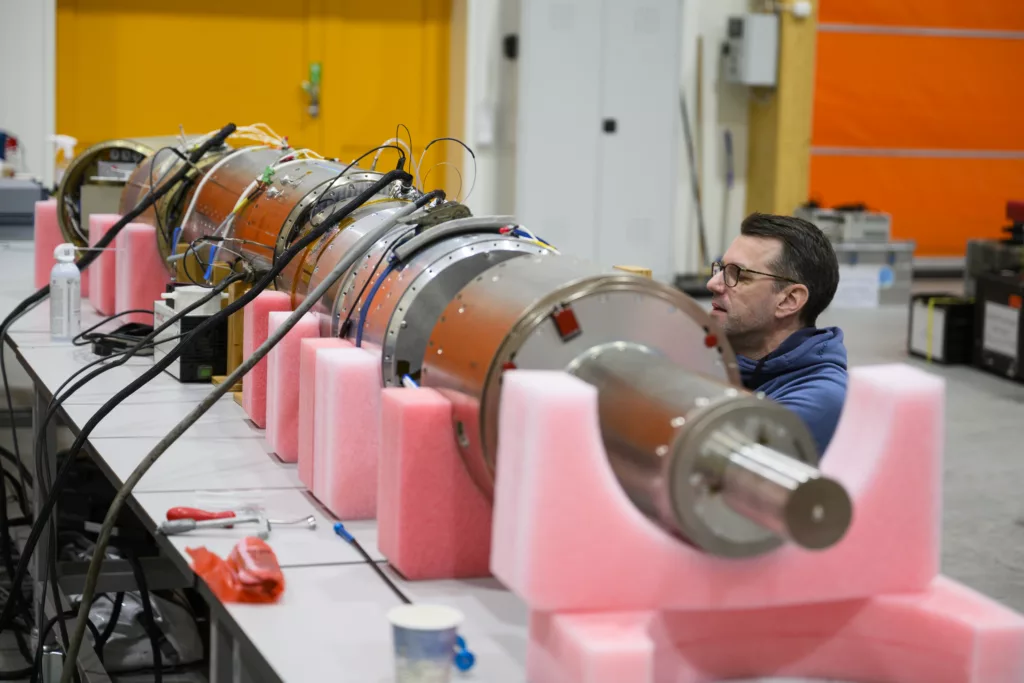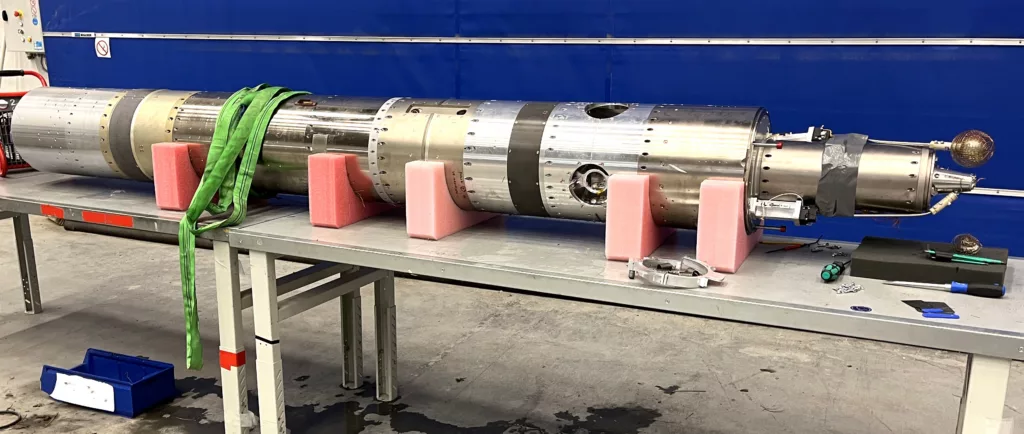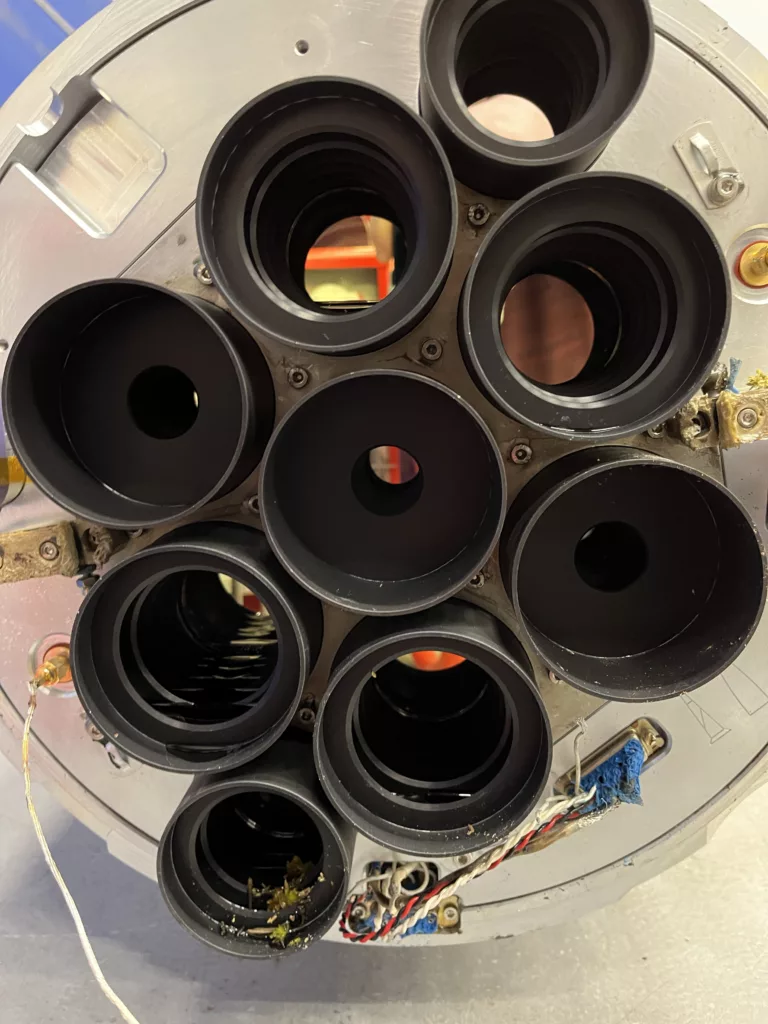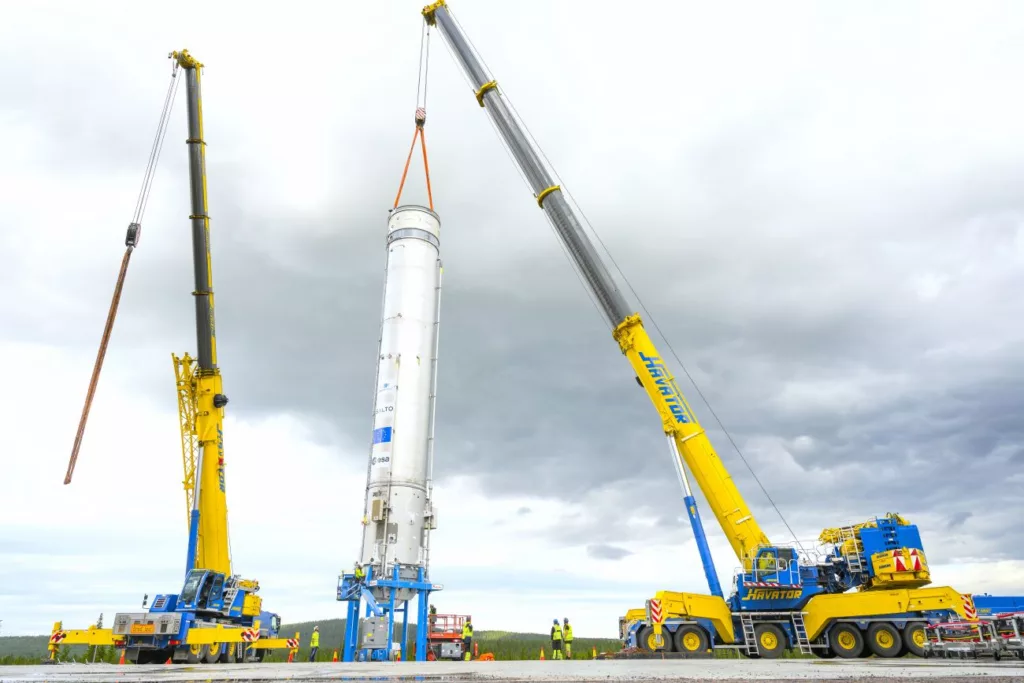News, Rocket Missions
The Department of Meteorology at Stockholm University (MISU) conducts atmospheric research using sounding rockets. On November 17, the ORIGIN-2 rocket was successfully launched from Esrange. The purpose of the mission is to investigate a phenomenon called nightglow, with the goal of improving models that explain physical and chemical processes in the atmosphere.
The payload containing the instruments was launched with a rocket from Esrange on November 17 and recovered already the next day. The research project is funded through the Swedish National Space Agency’s national balloon and rocket program.
The prerequisites for such sensitive measurement of weak light emissions from the Earth´s nighttime atmosphere, the so-called nightglow, are that neither the sun nor the moon may interfere and that there must be no Aurora. Easier said than done, during a solar maximum – however, the science team were lucky and could launch the rocket already during the second hot countdown for Origin.
“The conditions required for launch are quite complicated, in addition to the usual requirements of light winds and stable weather,” says Krister Sjölander, President Science Services at SSC.

Collaborative research
Most of the payload has already been in space on a previous mission and is now being reused and adapted to the current scientific questions. In addition to the MISU instruments, complementary sensors are provided by research groups from the Royal Institute of Technology in Stockholm, Sweden, the Leibniz-Institute for Atmospheric Physics, Germany and the Institute of Space Systems.
On board the rocket are nine nightglow photometers, two electrochemical oxygen sensors, atomic hydrogen and atomic oxygen resonance fluorescence probes, and sensors to measure electrons, ions, air density and temperature, as well as four ‘free flyers’ that will fly separately through the atmosphere to collect background data.
Nightglow occurs in the upper mesosphere and the lower thermosphere, at altitudes between 80-110 kilometers in the Earth´s atmosphere, and now the research team want to measure atomic oxygen and nightglow and study the link between them in detail.
“When sunlight hits the oxygen molecule, it splits into two oxygen atoms that carry a lot of chemical energy and can react with other atoms and molecules throughout the day and night,” says lead researcher PhD Jonas Hedin at Stockholm University.

Oxygen is key to understand the nightglow
In many cases, the result is another molecule that has received extra energy and then emits light. This light phenomenon is called airglow, more specifically it is called dayglow during the day and at nightglow at night.
“Oxygen plays a big role both chemically and in terms of how much energy is in the atmosphere, the radiation balance and so on, so it can have a big impact and is important for many studies of this part of the atmosphere. That’s why it’s good to know how much atomic oxygen is up there so we can learn how the atmosphere works and update the models,” explains Hedin.
Carrying out these measurements simultaneously is only possible with the help of a sounding rocket because the region of interest in the atmosphere is at too low an altitude to be measured using satellites and too high an altitude to be studied from an airplane or a balloon.
During the flight, ground based instruments, such as the ALIS-4D All-sky camera network operated by the Swedish Institute of Space Physics in Kiruna, the Esrange Lidar and several spectrographs were used. The Swedish Odin satellite also played an important role, as it conducted simultaneous measurements.













